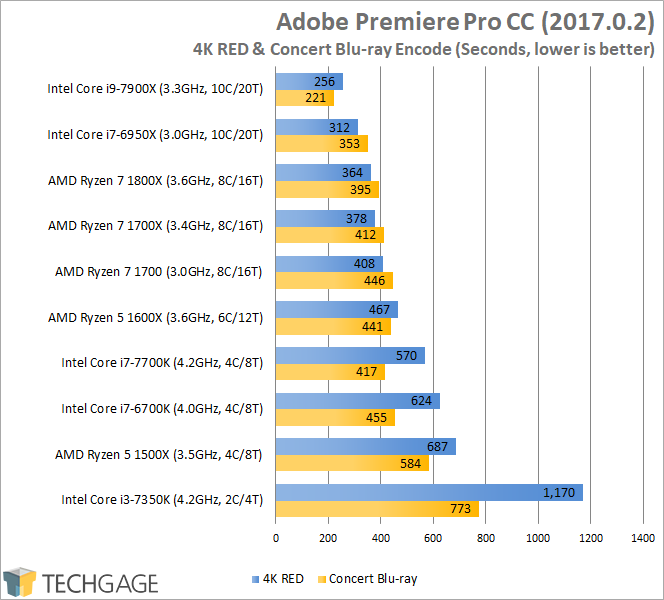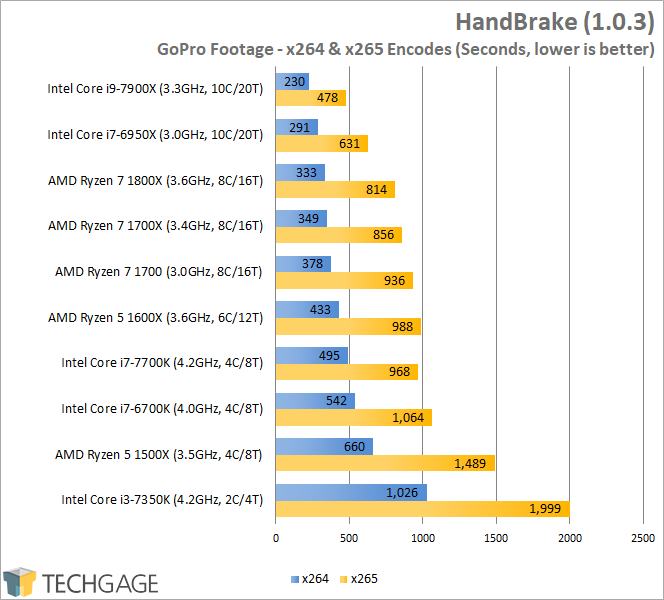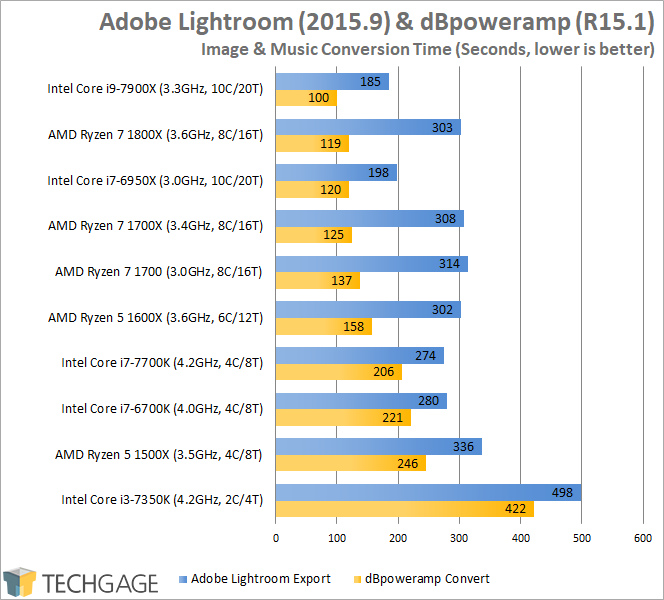- Qualcomm Launches Snapdragon 4 Gen 2 Mobile Platform
- AMD Launches Ryzen PRO 7000 Series Mobile & Desktop Platform
- Intel Launches Sleek Single-Slot Arc Pro A60 Workstation Graphics Card
- NVIDIA Announces Latest Ada Lovelace Additions: GeForce RTX 4060 Ti & RTX 4060
- Maxon Redshift With AMD Radeon GPU Rendering Support Now Available
A Look At Intel’s Core i9-7900X X-Series 10-core Processor

We take Intel’s latest and greatest CPU, the 10-core 20-thread i9-7900X, through our gauntlet of tests, as we get to grips with a new platform, X299. Shaving off $700 from the original 10-core desktop CPU, the i7-6950X, Intel offers more than just a simple clock boost to keep it competitive, such as with the inclusion of AVX512.
Page 4 – Media: Adobe Premiere Pro, Adobe Lightroom, dBpoweramp & HandBrake
(All of our tests are explained in detail on page 2.)
As seen on the previous page, rendering can take amazing advantage of even the biggest processors, but video encoding is not that far behind – if at all. Even the free conversion tool HandBrake can take advantage of our sixteen-thread processors to significantly decrease encode times. For our video encoding purposes, we use Adobe’s Premiere Pro, as well as HandBrake.
To a lesser degree, music conversion and image manipulation can also see benefits on beefier chips, so Adobe’s Lightroom and dBpoweramp will be used to help us gauge that performance.
Adobe Premiere Pro

The i9-7900X continues to dominate here, delivering a far better value at $999 now than the i7-6950X did for $1,699 last year.
HandBrake

Where encoding is concerned, Intel really does dominate, thanks in huge part to the fact that its hardware has dominated. Despite the 1800X having 80% the cores of the two Intel 10-cores, Intel has a huge advantage – more so with the higher-clocked i9-7900X – just keep in mind the price difference, though.
Adobe Lightroom & dBpoweramp

dBpoweramp’s a great tool for testing the scalability of cores and frequencies, although because it doesn’t support more than 16 threads, it does put the 10-cores at a disadvantage from delivering a dominating result. Above, I talked about Intel’s prowess in multi-media, and that shines through with the Lightroom test, with last-gen’s i7-6700K quad-core managing to conquer AMD’s 1800X eight-core. It’s hard to compete with such established optimization.
Support our efforts! With ad revenue at an all-time low for written websites, we're relying more than ever on reader support to help us continue putting so much effort into this type of content. You can support us by becoming a Patron, or by using our Amazon shopping affiliate links listed through our articles. Thanks for your support!





